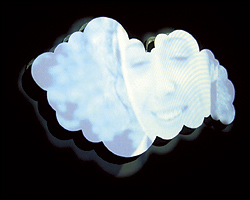The Seattle Art Museum’s exhibit “Between Past and Future” is a revelation: There’s hope for China. My visit there in 2000 left me with the depressing impression that the country had embraced all the worst of American culture (commercialism, bland pop music) and rejected all the best (democracy, free expression). But SAM’s thrilling sampling of the last 10 years of Chinese avant-garde photography and video proves that there is a vital (if small and suppressed) experimental art movement there. Some of the approaches are bit predictable: Liu Jian’s modified McDonald’s ads, for instance, or Zhang Dali’s photos of destroyed traditional buildings juxtaposed with monotonous skyscrapers. But many of the pieces are truly inspired and even have the power to shock jaded Western eyes. Much of the work documents performance art. Performance artist Rong Rong, prominent in Beijing’s “East Village” in the mid-’90s, is shown cross-dressing, painting himself, and covering his nude body in fish oil and honey, then sitting next to a public toilet for hours at a time, attracting countless flies. (Rong has been jailed for such antics.) There’s an amazing tension here—you get the sense that these artists are playing with fire as they repeatedly flout authority. I absolutely love Zhao Lian’s video Social Survey, in which the artist travels city streets with a gun aimed at each passerby he encounters. The gun, a potent symbol of authority, provokes almost no response in the pedestrians. Everyone’s too busy shopping. Finally, after seven minutes, one guy on the subway tries to push the gun away, and you want to applaud him for having a spontaneous, human reaction. There’s a formidable sense of seriousness and outrage to the entire exhibit, and although much of the resistance is cloaked in personal or subtle allusions, it feels very real. Zhang Huan’s nine-photo work Family Tree (above) transcends national boundaries and politics. To some extent, we’re all blotted out
by language, family, and the past, but if art like this continues to thrive, the course of Chinese history might be much brighter than we ever imagined. Seattle Art Museum, 100 University St., 206-654-3100. 10 a.m.-5 p.m. Tues.-Sun.; 10 a.m.-9 p.m. Thurs.







